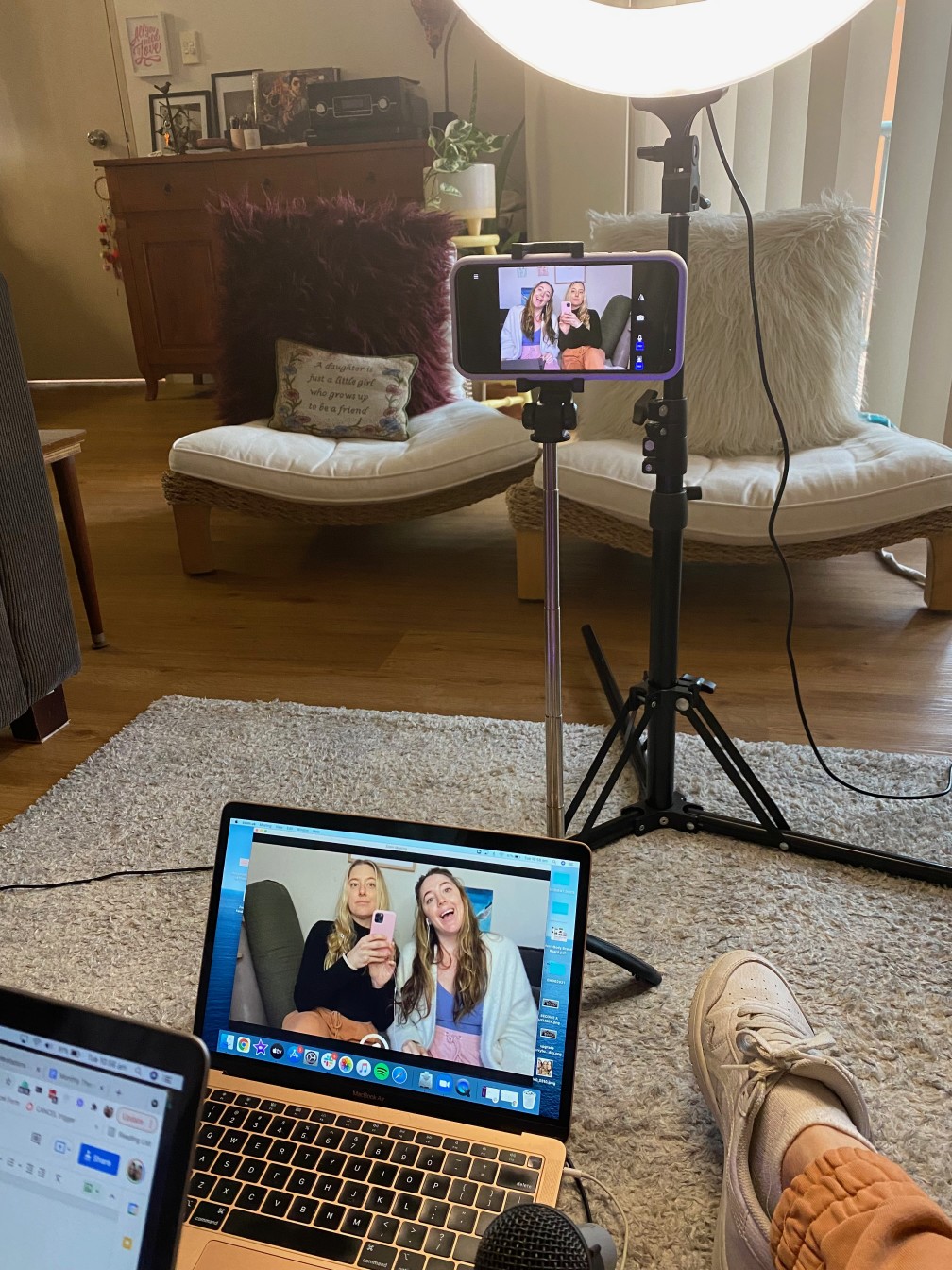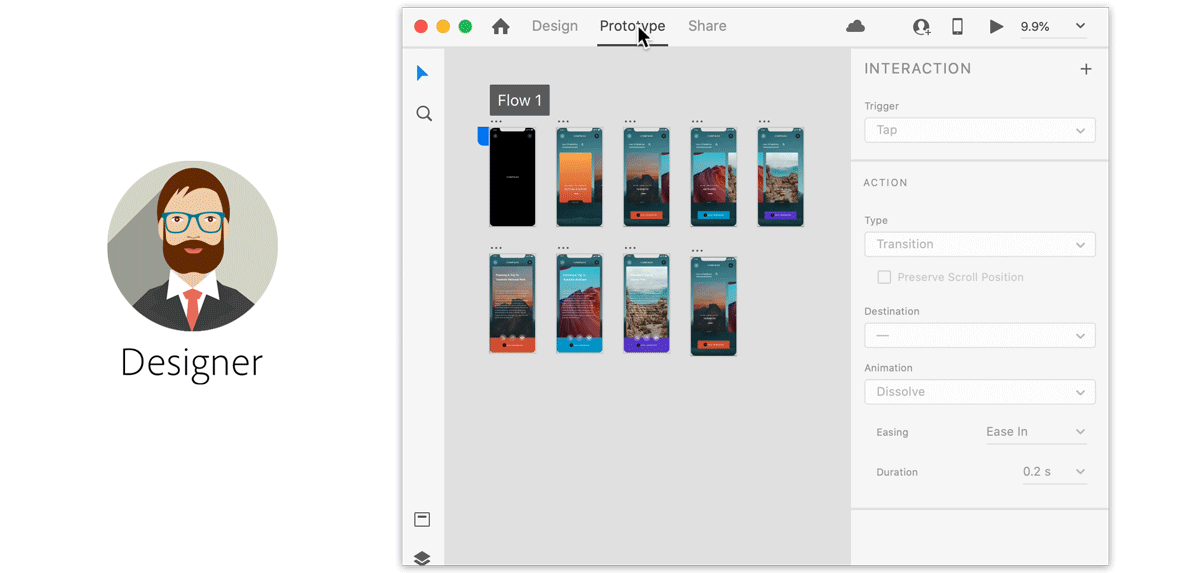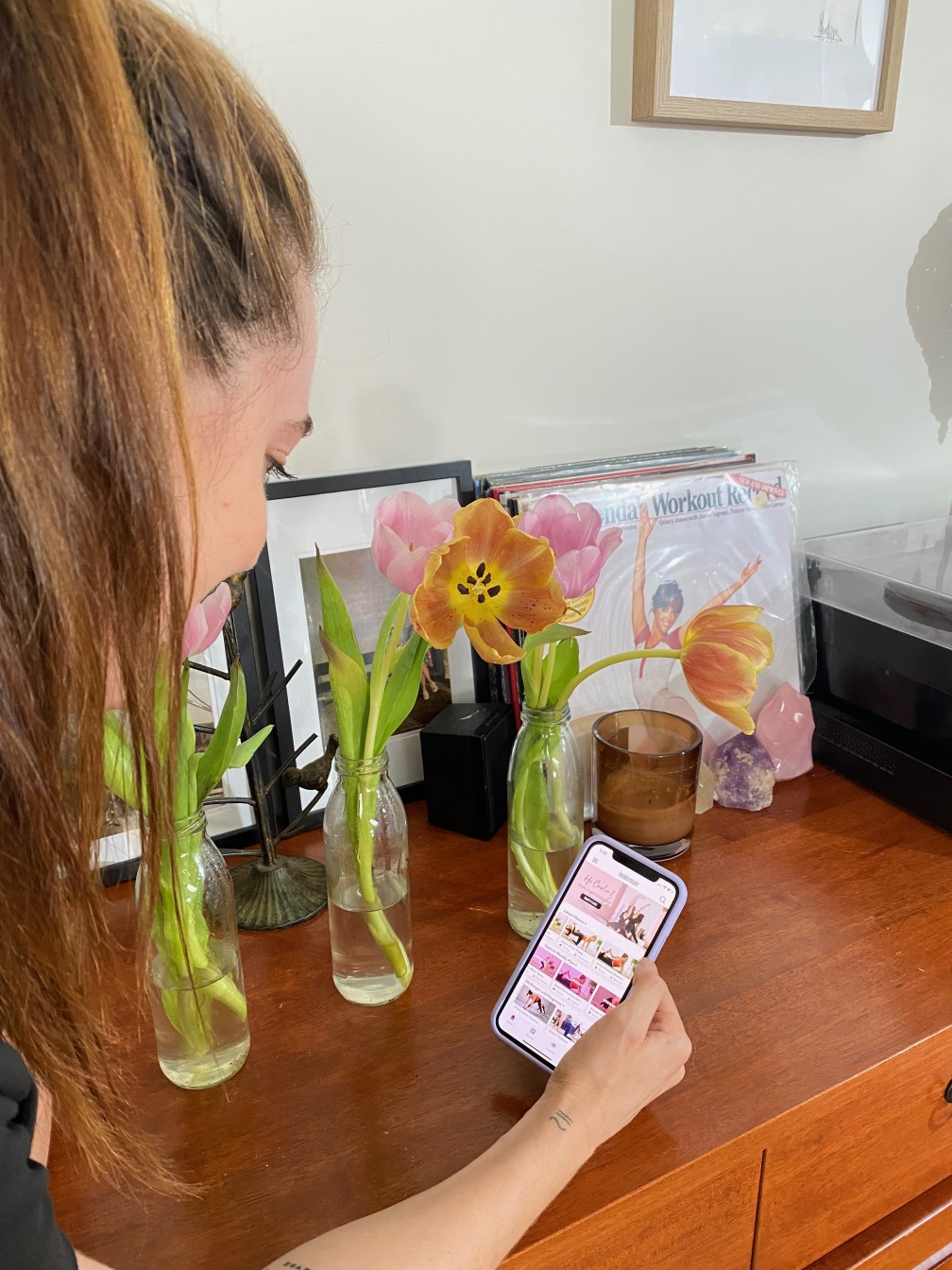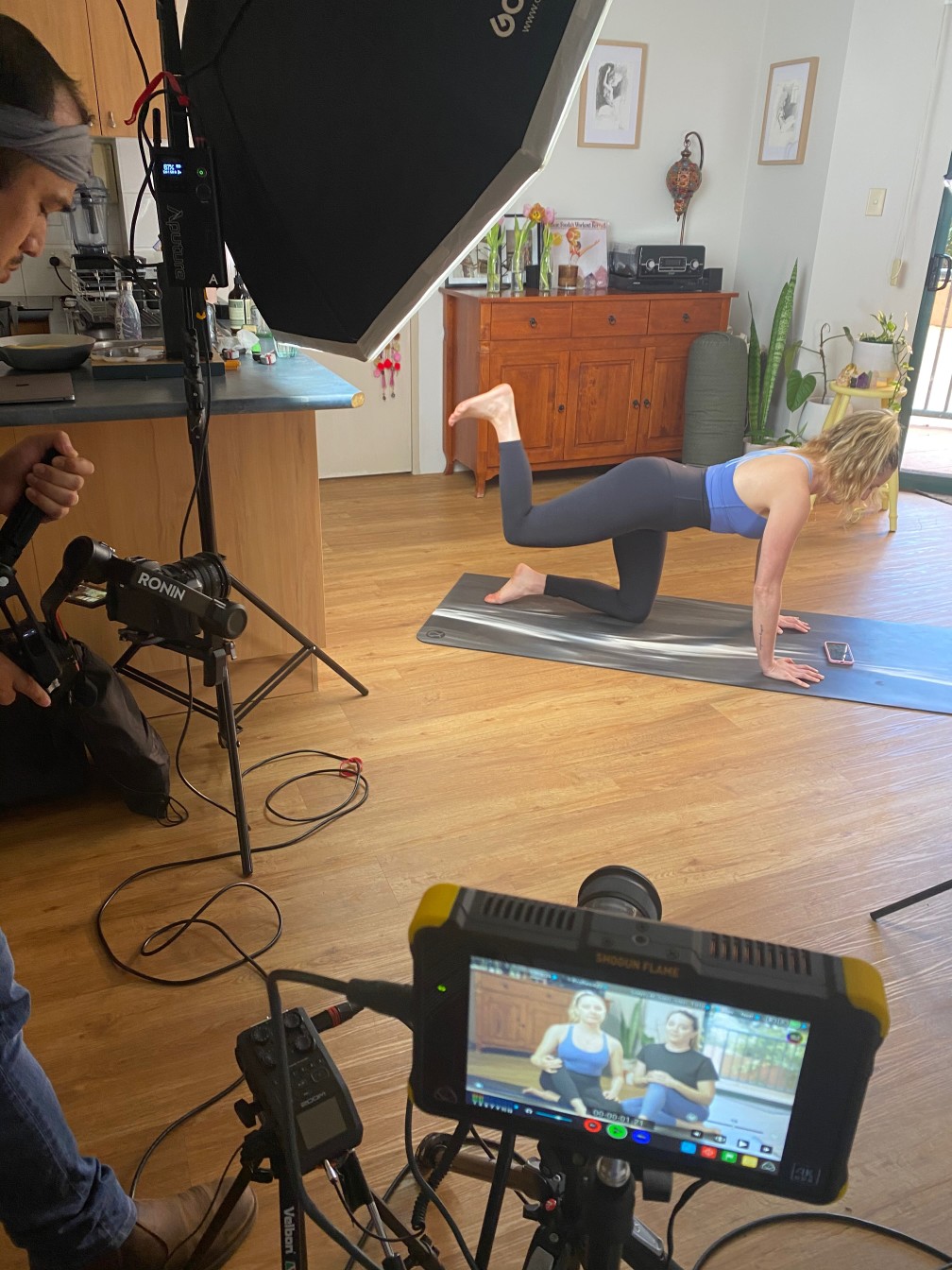Grasp the app development cycle for better collaboration with your partner agency.
Considering a mobile app for your small business? You're probably wrestling with the decision to either build it in-house or partner with an app development agency. Carla Papas[1], founder of the MerryBody, a meditation and yoga pilates app, faced the same dilemma. She opted for a hybrid approach, assembling an in-house team and bringing in a mobile app development agency consultant for added expertise.
"Having a team working closer to you helps oversee every tiny detail. But an agency might reduce personal stress. They handle the challenges, so there's likely less overwhelm."


Carla Papas
Co-founder of The MerryMaker Sisters
We also talked with Alexey Pichukov[2], a software engineer at Raiffeisen Bank International AG. He says this blend of hands-on oversight and expert guidance might be the sweet spot for many small businesses.
Leaders should familiarize themselves with the basics and phases of the mobile app development process to get the best product and value from their partnered agency. Learn about the mobile app development cycle as we navigate Papas’ journey with hands-on tips from Pichukov.
Decide the type of mobile app you need for your small business
App development agencies might delve into technicalities that can be confusing. Knowing the types of mobile apps that are available will help you steer your partnered agency more effectively to match your vision.
“Foundational knowledge can be a game-changer for business leaders aiming to reduce long-term costs. It ensures better collaboration with the development partner and helps verify if the right people are working on your mobile app.”


Alexey Pichukov
Software development engineer at RBI AG
The types of mobile apps that are at your disposal:
| Native apps | Hybrid apps | PWAs (Progressive Web Apps) |
|---|---|---|---|
What they are and how they work | Explicitly built for one platform (such as iOS or Android). More like tailored suits, made to fit perfectly. | One app for all platforms, using a single codebase. Think of them as one-size-fits-all outfits. | Web apps that behave like mobile apps. They're like bookmarks on your mobile’s browser that open full-fledged apps. |
Performance | High performance because they're optimized for their specific platform. | Good, but might not be as smooth as native mobile apps. | Decent performance, but dependent on the user's browser and internet speed. |
Pricing | More expensive due to specialized development for each platform. | Moderately priced since one app works everywhere. | Generally cheaper because they use web technology. |
Best for | Established brands looking for top-notch user experience and performance on a specific platform. | Startups or businesses wanting to reach a wider audience quickly and on a budget. | Businesses aiming for a mobile presence without the cost of app store deployments, especially those targeting areas with slower internet. |
Frameworks and programming languages | iOS: Swift, Objective-C. Android: Java, Kotlin | React Native, Flutter | Service workers, web app manifest |
Daily use-case app examples | Apple's Health app (iOS), Google Maps (Android) | Instagram, UberEats | Twitter Lite, Gmail (when accessed on mobile browsers) |
When deciding on the technology for MerryBody, Papas opted for a hybrid, cross platform app. She wanted to leverage the vast content already available on their website and offer it through a seamless app experience.
Pichukov, too, says hybrid apps can be good for small businesses, himself using React Native. “Native apps for either Android or iOS, with their separate codebases, can be pricier. Hybrid apps can offer the best of both worlds," he says. This insight empowers small-business owners to confidently discuss their app's direction with development agencies, ensuring optimal value and functionality.
/ Expert speaks
iOS vs. Android app development: Which one is the best?
Pichukov says iOS often offers a smoother development journey. Apple's built-in frameworks simplify the process, gifting developers with many features right out of the box. On the other hand, while Android provides flexibility, it demands more effort. Developers might find themselves hunting for the right library, and even then, it might not match the seamless experience of Apple's iOS app framework.
Plus, consider the vast array of Android mobile devices and screen sizes versus the limited and largely similar iOS devices. However, the ultimate choice hinges on your target audience, regional preferences, and budget. Understanding these nuances ensures a more informed decision for small-business owners, aligning their app's platform with their business goals.
Stages and steps to create a mobile app
The journey of building a mobile app unfolds in two pivotal stages:
Conceptual blueprinting encompasses the ideation, research, and planning phases.
Tactical execution delves into the hands-on development, testing, and deployment aspects.
Stage 1: Conceptual blueprinting of your mobile app
Delve into the foundational steps that shape the essence of your mobile app:
1. Define your mobile app’s goals and purpose
Every app solves a problem for its users. It's not just about what the app does, but the real value it adds to their day. So, ask yourself: “What problem does my app fix?" For Papas, it’s simple—give members an easy way to access yoga and meditation classes. She wanted members to open the MerryBody App daily, be excited to start a class, and have a smooth experience.
Pichukov’s tips for this step:
Engage with your agency for brainstorming on app ideas. Their expertise in app development equips them to clarify and refine your app's purpose, ensuring it aligns with market needs.
Visualize your app's future. Your agency can guide you on scalability, ensuring your app can handle more users or features as it grows.
Seek feedback on your app's distinctiveness. For instance, if your app offers a unique loyalty rewards system, your agency can validate if such a feature truly sets it apart and adds value for users.
2. Conduct market research on your ideal mobile app audience
Understanding your target audience is like setting the GPS for your app's journey. It's about recognizing trends and preferences. Creating user personas paints a picture of the typical user's habits and needs. Papas had a head start—her audience was her existing customers.
Regular six-monthly surveys kept her attuned to their desires. Before the app, the feedback was loud and clear: They wanted an app. Demographic trends revealed that 98% of her audience were women, with 80% using iOS—This information helped Papas make informed decisions about the app's design and features.
Pichukov’s tips for this step:
Collaborate with your agency to run small surveys. It's a direct line to understanding what your potential users want.
Pichukov notes that younger demographics and higher-income groups often lean toward iOS, while Android attracts a wider range of people and tech enthusiasts. Always validate these observations with your agency for your specific niche.
Use tools and studies from market research firms, such as Gartner, to get a broader view. Engage with multiple social media platforms or directly chat with potential customers for genuine feedback. The more you listen, the more you’ll know about people.
Ready to hire a mobile app development company for your business needs? Browse our list of companies in the following areas:
Stage 2: Tactical execution of building your mobile app
Here are some hands-on steps that shape the technical and user experience facets of your app:
1. Ensure the right talent is assigned to build your mobile app
The essence of a successful mobile app lies in hiring the right talent. Papas emphasizes the importance of a well-rounded team. She and her co-founder began with the app’s icon and mock-up designs, which were refined into wireframes and final versions with their designer. Two developers, one for the backend and another for the frontend, brought the app to life. "Our mobile app developer made the magic happen when buttons were pressed," Papas shares.
And post launch, marketing is crucial. While her full-time developer role became on-call post launch, she highlights the value of having a dedicated team, especially during updates. Partnering with an agency often ensures access to such diverse talent.

On the left is the MerryBody app icon conceptualized by Papas, and on the right is the refined version by their designer.[1]
Pichukov’s tips for this step:
Ask for resumes or portfolios of the team working on your project. Ideally, team members should have at least two to three years of experience in their respective roles to ensure they bring the necessary expertise to the table.
Share your vision with the UI/UX designers. Ask your designers to summarize or present a mock-up based on your brief to ensure they've understood. This will give you a clear idea if they've grasped the intended look and feel of the app.
Check developers' adaptability, especially for unexpected changes. It's also a good idea to discuss whether impromptu changes can be included in the package without additional costs.
Talk to backend developers about the app's scalability. Ask questions such as, "How will the app handle a surge in users?" or "What measures are in place for potential growth?"
Ensure there's a system for updates and troubleshooting. Clarify upfront if there are any hidden or additional charges for this support. Remember, the app's journey doesn't end at launch—it's an ongoing process.
/ Important note
Most app development agencies have ties with digital marketing agencies to help you market your app post launch. It's worth checking out Capterra's verified list of digital marketing agencies to ensure you're on the right track.
2. Zero in on your mobile app’s essential features
Every mobile app feature should directly enhance the user experience. It's about aligning with the app's main goals while balancing innovation and user needs. Papas initially added a fitness tracker to her app, thinking it would be beneficial. However, she soon realized that a simpler approach was more effective. Instead of the tracker, she prioritized creating masterclass sessions with over 500 fitness recipes, which her users found much more valuable.

Papas recording masterclass sessions for MerryBody app users[1]
Pichukov’s tips for this step:
Plot your desired mobile app features on a board with two axes: “impact” and “cost.” The order of priority should be as follows.

Ask your agency to draw from their past projects similar to yours. Their experience can guide you on which features have been successful and which might not be as impactful.
Regularly gather feedback, especially during the early stages. Your agency can help set up user testing sessions, ensuring the chosen features resonate with potential users.
/ Important note
When finalizing features for your mobile app, request that your agency discloses all software, toolkits, and packages they plan to use. While certain ecosystems have their own package managers, such as iOS with SwiftPM and Android with Android Studio, it's crucial to be cautious. Make sure your app isn't built using unverified third-party tools, as this could lead to data privacy or infringement issues down the line.
3. Create your app’s UI/UX wireframes
Mockups and wireframes are the bedrock of your mobile app's design. They're like architectural blueprints, ensuring everyone's on the same page. Modern user experience software has revolutionized this process, offering a unified platform for everyone involved.
For Papas, UI wireframes were instrumental. They highlighted gaps in the app's user journey, revealing missing pages and areas that needed refinement. She emphasizes the importance of visualizing the user's journey, saying, "This part of the project was all about imagining an app that wasn’t even real yet. How would a user click, and where would their eyes go first, second, and third… would they know to scroll? Would they know to click? Do we need an arrow here? All of these thoughts, before we had even started to build the app."

Sharing access and collaboration in UX tools is now more seamless (Source)
Pichukov’s tips for this step:
Mobile app agencies use app design and prototyping tools for collaboration. Request editor access to offer real-time feedback by leaving comments, dragging and dropping elements, and chatting with designers instantly, ensuring the design aligns with your brand and vision.
Share your brand's guidelines, color palettes, and design ethos in comprehensive files, preferably in vector formats such as Scalable Vector Graphics (SVG) or Adobe Illustrator (AI). This ensures the agency's designers have an apparent reference, minimizing unnecessary iterations and providing a design that truly represents your brand.
An app might look different on a tablet compared to a smartphone. Collaborate with your agency to test and refine the UI/UX across multiple device resolutions to guarantee a consistent user experience.
Consider asking your agency to incorporate A/B testing. This involves presenting two versions of a design element to users and gauging which one performs better. For instance, you might test two different button placements or color schemes to see which one results in more user interactions.
/ Important note
While many app agencies boast top-tier UI/UX designers, if you're seeking a specific design aesthetic or want to be more hands-on with the design process, exploring Capterra's verified list of user experience design agencies might be a good start.
4. Plan your mobile app’s user data permissions and security
Data protection isn't just a technical requirement; it's a pact of trust with users. With regulations such as the General Data Protection Regulation (GDPR) and the California Consumer Privacy Act (CCPA), businesses must be proactive. Our 2023 Security Features Survey* revealed that 50% of business leaders prioritize security and data privacy when buying software. Moreover, 44% discontinued software use due to security concerns.
AES (Advanced Encryption Standard) encryption, especially for Personally Identifiable Information (PII), is vital. It's also essential to transparently communicate the purpose of any PII collection in the app's privacy policy and terms of use. Papas' approach is straightforward: Stay updated with Android and iOS requirements and ensure developers implement these updates.
Pichukov’s tips for this step:
Engage with data protection lawyers or legal consultants. Many app development agencies are in contact with legal professionals to receive guidance on compliance related to GDPR and U.S. state privacy regulations.
Implement strong security measures in your mobile app such as two-factor authentication and end-to-end encryption to safeguard user data.
Clearly articulate the reason for data usage in the app's privacy section. For instance, you can say something along the lines of, "We collect location data to enhance user experience but never share it with third parties."
Offer users control over their data. Messaging apps, such as WhatsApp, allow users to access their chat history, download it for personal use, and delete their accounts, which removes their data from the servers. This level of control not only builds trust but also complies with data protection regulations.
Monitor changes in data protection regulations. This could mean updating consent forms or refining data storage methods.
Vikram Bodicherla[3], who currently works as an Android staff engineer at WhatsApp and has previously been with Facebook Messenger, Uber, and Yahoo Finance, shares insights on user data security based on his experiences.
/ CASE STUDY
Vikram Bodicherla on how to expertly handle data
Bodicherla believes that user data should be treated like a physical item that users trust you with. For instance, if you're building a mobile app for businesses, you don't need access to users’ contacts, calendars, or file managers unless it's directly relevant to the service. Even if you collect some private data, make sure you delete it once you don’t need it anymore. Only keep what's truly necessary. Be transparent with users about what data is collected and be cautious with third-party integrations.
He also highlights the importance of holding your app development team or agency responsible for how they handle data. For those new to the business world, get advice from a privacy expert. As your app gains traction and builds a strong user base, hiring a compliance officer becomes essential. Not doing things right can lead to big problems, from heavy fines to being blacklisted from app stores, and it can hurt your brand's reputation.
About Vikram Bodicherla
Android staff engineer at WhatsApp
5. Ensure your mobile app is correctly coded with the latest programming standards
Pichukov says, “Coding isn't just about getting the job done, but doing it well.” Papas learned this firsthand. When launching their app, they packed it with features. But over time, they realized that simplicity was key. For instance, they once removed a feature that allowed users to mirror their app on a big screen. But users quickly missed it and voiced their desire to have it back. Listening to their feedback, Papas' team promptly reinstated the feature. This experience underscores the importance of understanding user needs and ensuring the code that the app is built on is flexible enough to align with them.
Pichukov’s tips for this step:
Before your developers start coding, ensure they clearly understand the problem. This might get hard for you if you are from a non-technical background. Try appointing someone you trust to engage with your agency’s developers.
Ensure your development team uses consistent naming for variables and functions. It makes the code easier to read and modify later.
Encourage your team to avoid repeating code. Reusable code is easier to maintain and reduces redundancy.
While commenting within code is crucial for the rest of the coding and testing team, ask your developers to focus on explaining the “why” of complex decisions rather than the “what.” Commenting in coding is like leaving notes in the code to explain what it does. It helps anyone reading the code understand it better.
Make sure potential errors are anticipated and handled well, giving users clear messages instead of technical errors.
Ensure your agency's coders are up to date with the latest coding practices, tools, and libraries. Talk to the tech team’s lead to ensure they are well-equipped.
While functionality is essential, ask your developers to also focus on optimizing the code for better performance.
/ Expert speaks
Why do so many apps fail?
Pichukov believes that even with top-notch development, an app will fail if it doesn't address user needs. It's essential to strike a balance between perfection and timely delivery. If an app is glitchy or crashes often, users will abandon it. Moreover, simply launching an app doesn't guarantee users. Building a dedicated community is vital. Lastly, if your app doesn't enhance or simplify the user's life in some way, it's time to revisit its core purpose.
6. Thoroughly test your app and incorporate feedback
Pichukov views mobile app testing as donning various glasses, each providing a distinct lens—whether it's design, performance, or usability. His guiding principle is straightforward: build, measure, improve, and iterate swiftly. For smaller companies with tighter resources, he recommends asking their QA analysts to encompass the code with unit tests (which test individual components), UI tests (focusing on the user interface), and snapshot testing (subsets of UI tests that capture and compare UI snapshots for changes). Additionally, integration testing, which ensures different software modules work in harmony, is crucial.
Papas, on the other hand, champions the user's viewpoint. She shared that she and her team immersed themselves in the app, exploring every feature and noting any discrepancies. To capture real-time feedback, she invited MerryBody's existing members to be beta testers. This proactive strategy yielded priceless feedback both pre- and post-launch, ensuring the app consistently met user expectations.

Papas personally beta-tested the app on her smartphone to ensure there were no bugs.[1]
Pichukov’s tips for this step:
Ensure your agency uses automated testing tools. These tools can simulate different scenarios, pinpoint broken code, and ensure optimal performance.
As a key stakeholder, always be informed. Whether it's about bug reports or updates, ensure you're part of the communication.
While emulators are useful, testing on actual devices is crucial. Ensure your mobile app is checked across various OS versions, screen resolutions, and device types.
Work with your agency to outline specific test cases before testing begins, ensuring all essential functionalities are covered, such as payment pages, signup pages, etc.
Request penetration testing to check your app's security by mimicking cyberattacks, ensuring user data safety.
Schedule a beta version release of your app before the official launch to gather real-world feedback and make necessary tweaks.
7. Deploy your app on a reliable server, and support it with regular updates
Deploying your app is a significant milestone, but it's just the beginning. The real challenge lies in maintaining its relevance and ensuring its security. While cloud solutions have democratized access to advanced features, it's the post-launch phase that often determines an app's success.
Papas, with her app MerryBody, realized the importance of a robust hosting solution. She chose a dedicated cloud server to handle 4K resolution recorded videos and unexpected user surges, especially during weekends. Post launch, she emphasized rigorous testing after every update, learning from occasional oversights. She also actively sought feedback, making necessary adjustments based on user preferences.

Papas records high-quality tutorial videos that require a dedicated server and hosting[1]
Pichukov’s tips for app deployment:
Ensure your agency opts for reputable dedicated cloud servers that guarantee high performance, scalability, and security.
If your app involves resource-intensive tasks, such as AI-based image recognition or playing 4K resolution videos, ask your agency to consider a dedicated server to handle high activity periods efficiently.
Request that your agency uses the Application Programming Interface (API) for minor changes, saving direct app updates for major feature rollouts. For instance, tweaking a color scheme can be done via the API, while adding a new chat feature might require an app update.
Tips for post-launch app updates:
Engage with users directly for feedback. This can be through in-app bug reporting, feature requests, or surveys. Their insights will guide your app’s update priorities.
Ensure your agency maintains a record of tech debt. Regularly review this with them, deciding which features or bugs need immediate attention.
Ask your agency to adopt agile development practices. Sprints typically last two to four weeks. This approach allows for quick adjustments based on feedback or changing priorities.
Make security patch updates a priority over feature updates. With increasing cybercrime, vulnerabilities can compromise user data, leading to trust issues and potential legal consequences.
/ Important note
For smaller businesses, Pichukov suggests not sticking to a strict update release schedule. Since app store reviews can take a while, it's wiser to group many bug fixes and improvements into one update. For example, instead of pushing minor updates every week, think about a monthly update that tackles several issues. When introducing new features, make decisions based on user feedback and what the business requires.
Building a mobile app gets easier when partnered with an expert
When Papas began her journey with MerryBody, she felt like she was in uncharted waters. "Everything was so new and different," she recalls. "But as days turned into weeks, with our app consultant's guidance, even complex tasks, like creating an endpoint (a specific web address for app data requests), felt like a breeze. They were our rock, especially on days when our app faced crashes or technical hitches."
Curious about what Pichukov advises for SMB leaders crafting their first app, we reached out. He shared, "I've seen many business leaders get tangled up with the intricate guidelines of Android and Apple app stores. It's not just about building an app; it's about ensuring it fits within those guidelines without compromising on its essence. SMBs often aim for a swift launch, impeccable user experience, and unwavering support. All of this becomes a lot more achievable with a seasoned app development partner."
Capterra knows how daunting it can be to sift through countless pitches from agency vendors. Explore our list of verified mobile app development agencies to make things easier. And if you're feeling a tad overwhelmed with the whole process, our free project plan template guides you every step of the way.

